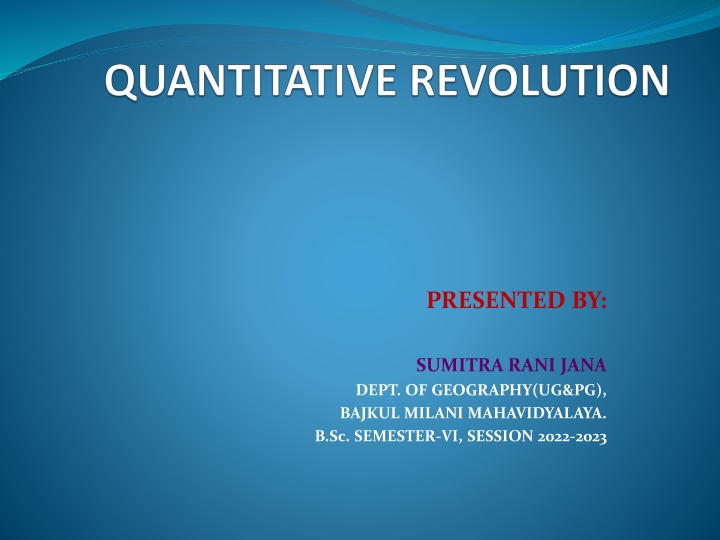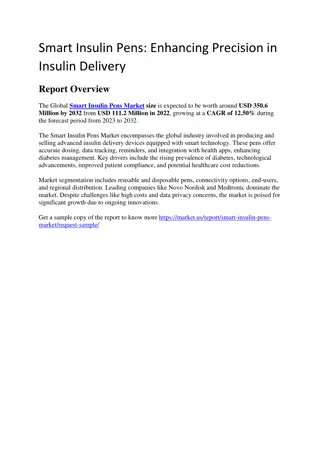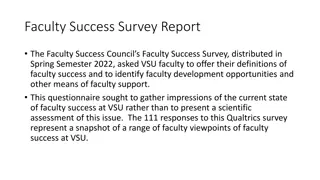
Quantitative Revolution in Geography: A Shift in Geographical Study
Explore the Quantitative Revolution in Geography, a significant shift from regional to scientific approaches in the 1950s-1960s. Learn about the transformation led by geographers like Ian Burton, emphasizing quantitative aspects and generalization through mathematical models. Discover the background, key proponents, and the impact of this revolution on the discipline of geography.
Download Presentation

Please find below an Image/Link to download the presentation.
The content on the website is provided AS IS for your information and personal use only. It may not be sold, licensed, or shared on other websites without obtaining consent from the author. If you encounter any issues during the download, it is possible that the publisher has removed the file from their server.
You are allowed to download the files provided on this website for personal or commercial use, subject to the condition that they are used lawfully. All files are the property of their respective owners.
The content on the website is provided AS IS for your information and personal use only. It may not be sold, licensed, or shared on other websites without obtaining consent from the author.
E N D
Presentation Transcript
PRESENTED BY: SUMITRA RANI JANA DEPT. OF GEOGRAPHY(UG&PG), BAJKUL MILANI MAHAVIDYALAYA. B.Sc. SEMESTER-VI, SESSION 2022-2023
INTRODUCTION: Ian Burton(1963),geographer of University of Toronto coined this term quantitative revolution for the first time. From 1950s-1960s there was a dramatic shift of geographers attitude from regional approaches to systematic scientific approaches. It become very popular in the U.S.A. and gradually accepted in Europe and outside . This shift of standpoint or interest is called quantitative revolution by Burton. A radical change of conventional concepts(regional uniqueness) was required in the efforts to establish geography as a spatial science through constructing hypothesis, theories and models with the help of the concepts derived from the analysis of spatial distribution of geographically significant phenomenon. As a result, regional uniqueness was ignored in the quest of generalization to formulate law and models. In this new method more emphasis was given on the quantitative aspects of a geographical phenomenon being guided by positivism . This new scientific study and research, heavily dependent upon quantifications, brought about a radical change in the existing approach . So it is called quantitative revolution. Burton described quantitative revolution in the following way: In the past decade geography has undergone a radical transformation of spirit and purpose, best describe as quantitative revolution . The consequences of the revolution have yet to be worked out and are likely to involve the mathematization of much of our discipline, with an attendant emphasis on the construction and testing of theoretical model.
BACKGROUND: Quantitative Revolution in geography started from the debate that Schaefer and Hartshorne had . Schaefer (1953) argued for generalization through the study of spatial distribution of certain features on the surface of the earth for formulation of laws . Central Place Theory which was brought out by a German researcher, W. Christaller in 1933, is considered the first successful geographical model. It served as the base of many research works falling into the domain of quantitative revolution during 1950s and 1960s. Ackerman s essay entitled Geographic Training Wartime Research, and Immediate Professional Objectives , published in 1954, argued in favour of systematic and scientific approach. Ackerman s Geography as a Fundamental Research Discipline (1958) is a classic presentation of research organization through quantification and scientific approach leading towards formulation of laws and models by generalization ( Johnston and Sidaway). Besides this E.L.Ullman s (1953) book Human Geography and Area Research proposed a kind of research suitable for the purpose of making scientific laws.
A decade before Schaefers work, in 1940s, a group of social physicists started scientific analysis of human activities with a strong emphasis on space . G.K.Zipf (1949) introduced the concept of the principle of least effort ; J.K. Stewart (1947) advocated for using the principles of physics to describe human behaviour. Diffusion of innovation in space was proposed by Torsten Hagarstrand in 1952. Economists like walter Isard and Cumberland (1950) developed the notion of space economy using mathematical models and graph synthesis. At first this scientific approach of studying started in some American Universities and soon become popular all over the world . Iowa, Wisconsin, Princton and Washington University took the leading role, which has already been discussed in details in the part related to the development of systematic geography. Circumstances: Quantitative Revolution brought about methodological change in geographical studies and researches in the decade of 1950s. This change was necessary for various purpose, which are as follows:
In the decade of 1950s, just after the World war II, the study of geography faced a deep crisis, which was as strong as to lead to the closure of the study of geography. In 1948, James Conant, the President of Harvard University, decided geography to be unsuitable for study in a university. So geographical studies in this university were ceased. At this critical juncture-a change in the method of studying the subject was an urgent need of the hour. Not only in the university campus, geography should deserve respect in society as a science. After the world War II, geographers felt that the subject was lacking in standard theory, laws, models, etc. other subjects, such as Sociology, biology, etc were not lacking in them. Geographers enjoyed no social importance. Under such circumstances, it seemed that geographical study and research must have a scientific approach and should be placed on a firm theoretical base. Geography was consider unscientific because its method of study was descriptive in nature. It could not give satisfactory explanation of regional uniqueness also. Explanation was not possible because of the inadequacy of standard theories, rules or models. I. II. III. IV. Geographical studies and researches remained confined to books. There was no scope for their practical use in social life. VI. People had confusion about the class or category in which the subject belonged to. So it was required to state clearly that geography belonged to the discipline of science. V.
Characteristics of Quantitative revolution: according to Chisolm(1975), this methodical change of geography should better be termed as evolution rather than revolution. This is so because this change of system(from regional to scientific approach) gradually took place for the desire which had been felt for a long time. According to D. Gregory(1981), quantitative revolution does not signify that only the laws of mathematics are widely used here but it is also concerned with constructing general laws of spatial organization . The laws of physics, geometry, statistics, and life science were applied in geographical research works. The application of statistics in geography introduced the system of analysis of measurable data. A model is a simplified form of a complex reality. A model can also present the simplified form of a theory. As a result of quantitative revolution in geography , model making for common spatial distribution became very popular. It marked the beginning of proper analysis and study of spatial relation, spatial flow and spatial interaction through the analysis of input- processing- output system.
Objectives of Quantitative Revolution in Geography: Scientific explanation of geographical phenomena became the dominant objective on the basis of accurate quantification, generalization, law-making and logical deduction rather then describing regional uniqueness. The principle aim of science is to give logical explanation. It need universal theory, axioms or rules on the basis of which a phenomena or a distribution can be explained. Quantification aims to enable the use of formula and equations which could easily express the relation among geographically significant elements. With the introduction of mathematics and statistics in geography the use of different signs began. Signs such as h for height, q for inclination , t for temperature etc. were widely used. Its goal was generalization and construction of theories concerning the order of different things. It aims to provide a solid theoretical foundation to geography and to enable scientific explanation.
Criticism of Quantitative Revolution: The introduction of scientific system in geography made the subject limited to the scope of geometry that failed to explain the interaction between man and nature. Bultimer (1976), Guelke(1974) and Tuan(1976) criticized quantitative approach from the ground that it has reduced human beings to abstract and rational objects. Quantitative Revolution concerns itself only with information or statistics which are objective, measurable and collected on the basis of experience. It falls short of taking into account social attributes and practices, the measurement of which is considered not possible. As a result of oversimplification, a model or a theory neglects some geographical phenomena which may sometime play an important role. Quantitative revolution in geography is based on positivistic or logical positivistic philosophy. Both of these philosophies are under serious criticism from humanistic standpoint(peet,1988). So the methods and findings of quantifications in geography are under questions.






















